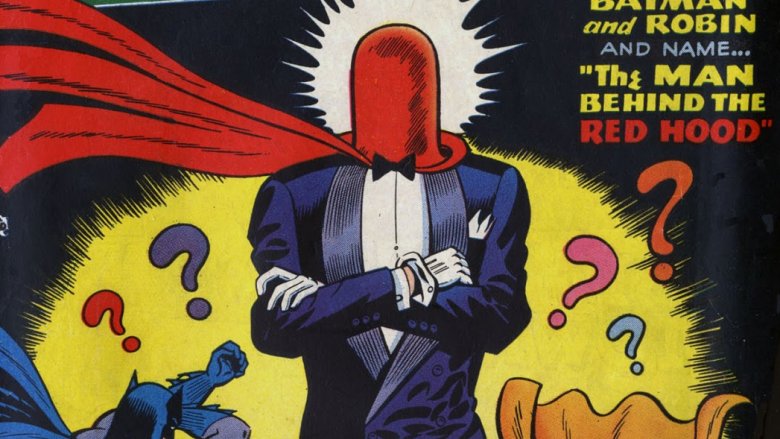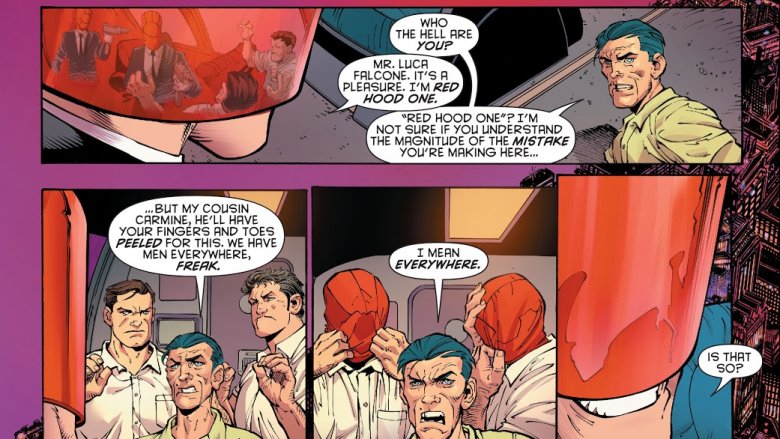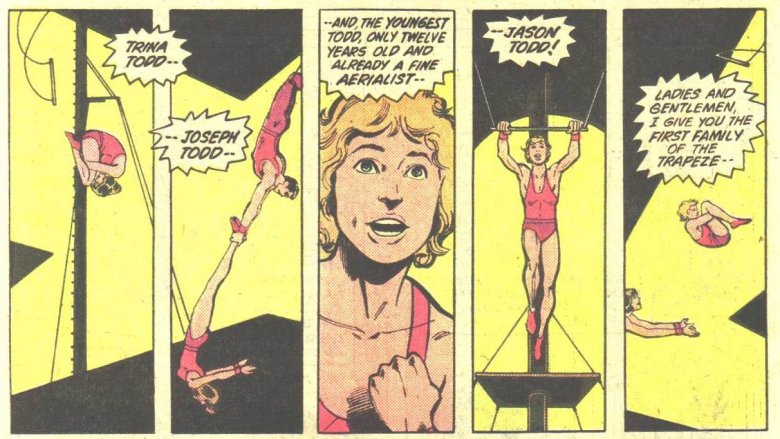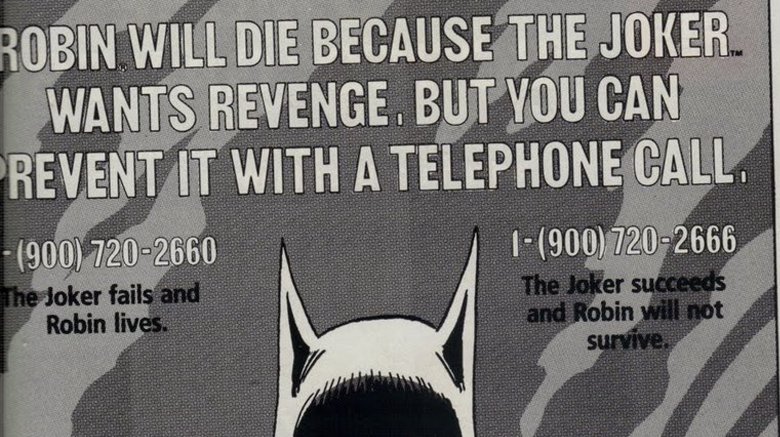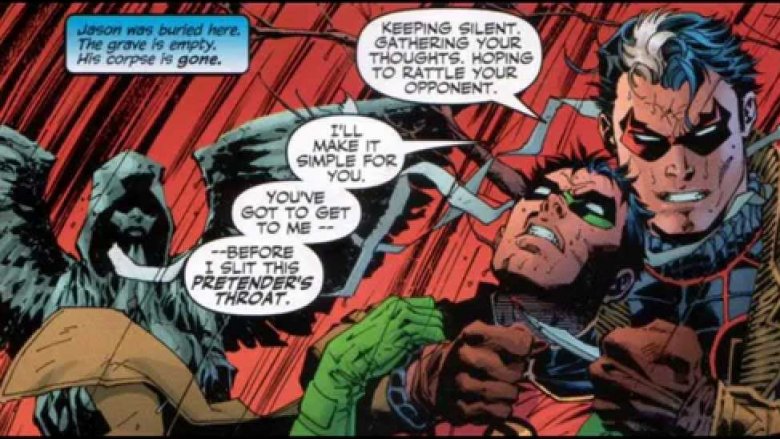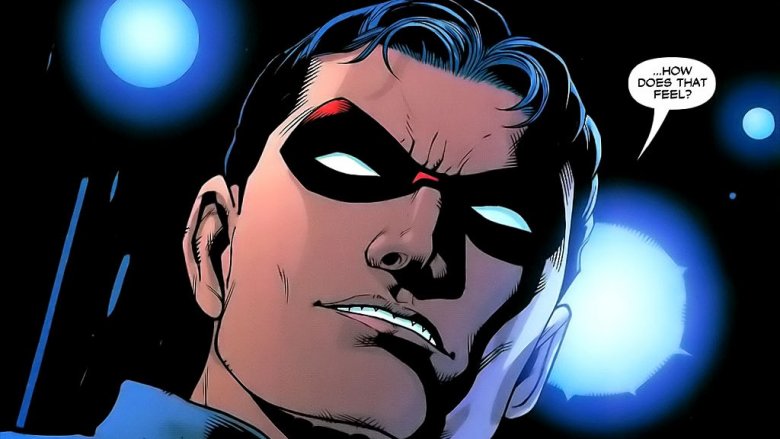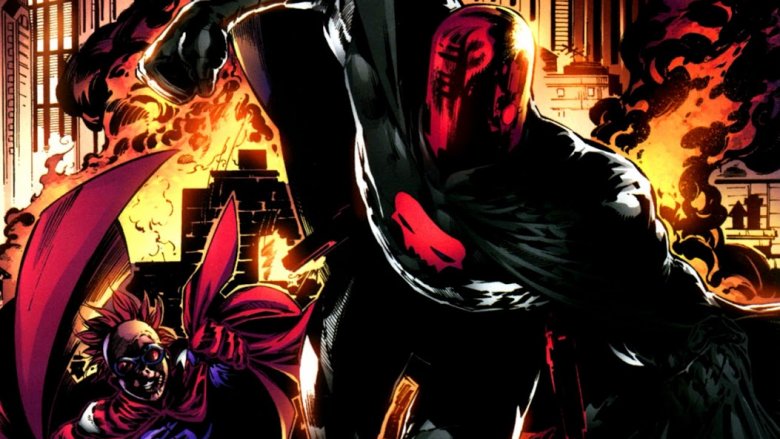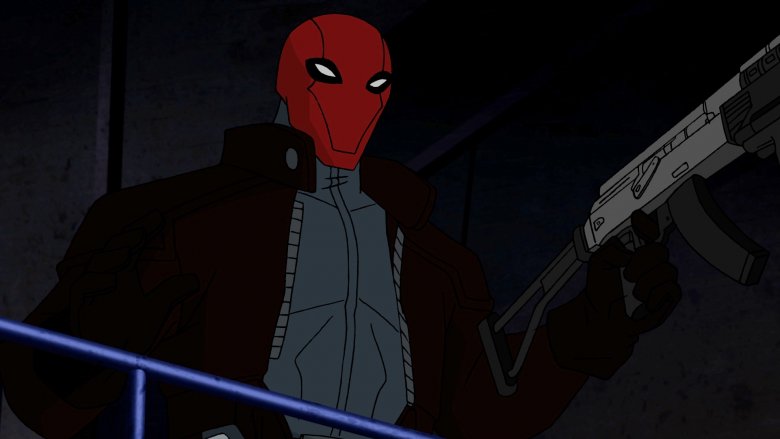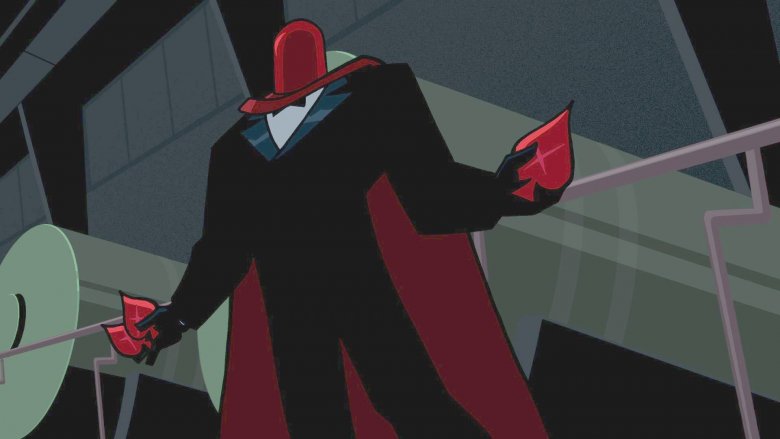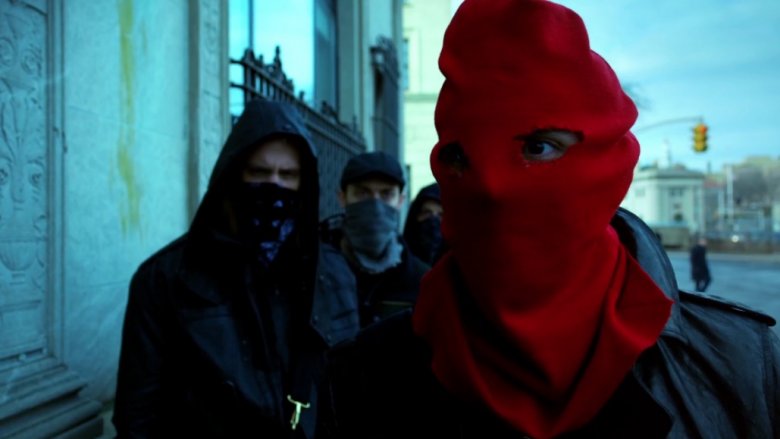The Red Hood: The Untold Truth
The Red Hood exists in the DC Universe, where — as with most comics — superhero and supervillain identities are rarely static; sidekicks take over, continuity gets rewritten, and heroes become villains while villains become heroes. But for every simple passing of the torch like Nightwing becoming Batman or Kid Flash becoming the Flash, there are identities with bizarre histories where each version of the character seems to have no relationship to the previous one. Even among a list of strange legacy characters, Red Hood is one of the oddest.
A sometime supervillain, sometime superhero that's been portrayed by multiple characters from the Joker to one of Batman's Robins, the Red Hood has one of the most complicated backstories in Batman history. From his origin as one of Batman's oldest foes (despite first appearing decades after Batman's early issues) to an origin involving a continuity-altering punch from an alternate-universe Superman, we have a complete rundown of Gotham's strangest red-themed vigilante. Here is the untold truth of the Red Hood.
College Criminology and the art of deduction
Red Hood first appeared in Detective Comics #168, a story about Batman guest-lecturing at a college to teach students criminology. Oddly enough, the first appearance of the Red Hood is actually in a flashback, as Batman enlists his students to help him solve the mystery of a criminal that escaped him ten years ago. When the Red Hood shows back up on the college campus to steal the priceless artifacts that any normal college would have, Batman manages to trap him. It turns out that the Red Hood was a 22-year-old illiterate groundskeeper, Earl "Farmerboy" Benson.
Well, not quite.
The real Red Hood was actually the Joker, who had been apprehended by "Farmerboy" so he could steal the Red Hood's costume and rob the many treasures found on the college grounds. While the Joker had long been one of Batman's most famous villains, Detective Comics #168 provided an origin story for the Clown Prince of Crime, one that would be continually referenced by later Batman comic creators like Alan Moore and Brian Bolland in The Killing Joke.
The Red Hood Gang of Zero Year
By the 2010s, the Joker's relationship to the Red Hood identity had been so set in stone that creators Scott Snyder and Greg Capullo were actually able to make a Red Hood story that only hinted at the Joker's origin. In "Zero Year," a revamped origin story for Bruce Wayne saw him come into conflict with The Red Hood Gang, a group of criminals who enlisted ordinary Gotham citizens to don the trademark red hood through blackmail and extortion. Even Bruce Wayne's uncle ended up conscripted in the massive sleeper cell organization. The leader of the gang went by Red Hood One, and his sleeper cell of Red Hood followers managed to be a pain in Wayne's side long enough for him to create the Batman persona.
Although "Zero Year" never explicitly confirmed that Red Hood One was the Joker, his climactic showdown with Batman did end in an Ace Chemicals warehouse. Ace Chemicals, of course, is the birthplace of the Joker in most continuities, so readers were left to make their own conclusions. Still, while the Joker might have been the first Red Hood, he's certainly not the only one, and arguably not even the most famous one.
Jason Todd: from Dick Grayson clone to street rat
The most famous Red Hood, and the character who's worn the mantle the longest, would be Jason Todd, former replacement Robin. Jason Todd started out as nearly an exact clone of Dick Grayson, with a similar personality and an almost identical origin — where Dick Grayson's parents were acrobats murdered by Tony Zucco, Jason Todd's parents were acrobats murdered by Killer Croc. In fact, the biggest difference between them was that Jason's hair was red while Dick's was black. This continued on until DC's Crisis on Infinite Earths, a massive crossover event that saw DC restructuring their continuity and retconning various story threads.
Following Crisis, Jason Todd was an orphan living on the streets, who was taken under Batman's wing after attempting to steal the tires off of the Batmobile. While pre-Crisis Jason had been a replacement Dick Grayson, this new Robin was haunted by his life on the streets and constantly filled with rage. If Dick Grayson had been the dutiful and respectful son, then Jason Todd was an angst-filled teenager with attitude for miles.
The call-in number that spelled doom for Batman's ward
It might have been because of Jason Todd's rebellious attitude that some readers had begun to tire of him and even send in hate mail. A 1-900 number was advertised in the pages of Batman, encouraging readers to vote on whether Jason Todd would be killed by the Joker or whether he would survive. Out of thousands of votes, the poll came down in favor of Jason Todd getting murdered by a narrow 72-vote margin, and in "A Death in the Family," that's exactly what happened. The Joker kidnapped Jason, beat him with a crowbar, and then blew up the warehouse that Jason and his mother were held captive inside, all before Batman could stop him.
The story arc was a character-defining moment for Batman, and would go on to influence later stories for decades. In the immediate aftermath, the Joker became the Iranian representative to the United Nations which gave him diplomatic immunity (this is not a joke), while Batman would return to hunting criminals without a sidekick — a development that would last less than a year before Tim Drake would take up the mantle of Robin.
The (fake) return of Jason Todd
For years, Jason Todd's death was set in stone. Even in the superhero genre, where characters return from death every other year, this death seemed as permanent as Spider-Man's Uncle Ben or Captain America's old partner Bucky. Well, as it turns out, Bucky would eventually come back as the Winter Soldier in 2005, and in 2002's Batman: Hush, it looked like Jason Todd had returned from the grave as well.
The arc was a bit of a Greatest Hits album of Batman's most memorable battles, showcasing a twisting plot that brought Batman up against Superman (temporarily mind-controlled by Poison Ivy), the Joker, and Ra's al Ghul. It all came to a head when then-Robin Tim Drake was kidnapped by Jason Todd, seemingly returned from the dead. As it turned out, it was actually Clayface mimicking the former Robin, acting under orders of the true mastermind, Hush. While Jason's return from the dead had been a ruse, the plot twist did convince one reader that it was time to bring the character back for real.
Under the Hood
That reader was comics writer Judd Winick, who officially brought Jason Todd back to life in Under the Hood. How he actually came back was a bit of a doozy involving Infinite Crisis. The sequel to Crisis on Infinite Earths, Infinite Crisis involved an alternate version of Superman punching the walls of reality so hard that the main DC universe's continuity was rewritten. Because of this reality-altering punch, Jason Todd was brought back to life and wandered the streets in a crazed state until he was picked up by Talia Al Ghul. While with Talia, he took a dip in a Lazarus Pit — a mystical rejuvenation liquid often used by Ra's Al Ghul to resurrect himself — giving Jason enhanced strength and deep-seated anger issues.
All this continuity rejiggering finally resulted in Jason returning to Gotham in a new identity: the Red Hood. As the Red Hood, Jason was a lethal vigilante, killing criminals and torturing the Joker while also coming to blows with Batman who he blamed for not killing the Joker years ago. The story arc ended with Jason as the Red Hood poised to become a rival to Batman, a much more lethal vigilante than Gotham City was used to.
The dynamic duo, Red Hood and Scarlet?
In one notable story arc, Red Hood's rivalry with the Bat-family came to a head while Dick Grayson and Damian Wayne had taken over as Batman and Robin. In a fit of jealousy, Jason started his own dynamic duo: himself as Red Hood along with his own twisted child sidekick, Scarlet — a girl that had been horrifically scarred by a supervillain after Damian failed to save her. Hilariously, the story arc involved Red Hood giving Gotham City a number to call to vote about whether or not to unmask Batman and Robin on a live webcam — a meta-textual wink to Jason Todd's own fatal phone poll.
While Red Hood and Scarlet's lethal vigilante justice was initially popular with Gotham citizens, it attracted the attention of Flamingo, an insane cartel enforcer decked out in a bright-pink matador-like outfit. After a drawn-out fight, Red Hood was able to seemingly kill Flamingo (temporarily, since no one really stays dead in comics), proving to himself that he'd finally surpassed both Bruce Wayne and Dick Grayson since he had managed to kill his arch-enemy.
Under the Red Hood
Jason's return as the Red Hood in the Under the Hood story arc proved popular enough that DC would adapt the story into an animated feature: Under the Red Hood. Likely in the interest of not having to explain the complicated events of Infinite Crisis, Jason's resurrection in the animated film was simplified to be the sole product of the Lazarus Pit, but the adaptation was otherwise fairly accurate to the comic events. In Under the Red Hood, Jensen Ackles (Supernatural) provided the voice of the resurrected former Robin. Ackles' performance — and his own history as a heartthrob on Supernatural — was successful enough that it cultivated a groundswell of fan support for him to portray the character in a live action role.
Unfortunately for expectant fans, the actor hasn't been involved in any of the live-action DCEU movies in any capacity, and as Ackles himself said, "I wouldn't hold my breath."
The Brave and the Bold Red Hood
Red Hood would also appear in a different animated adaptation, albeit a different version of the character and a decidedly different tone of animation. Batman: The Brave and the Bold was a deliberate throwback cartoon with a tone straight from the 1966 Batman live-action show and a blocky animation style that was more reminiscent of Jack Kirby than the Bruce Timm house style that had been de rigueur for DC animation for decades. In addition, the plot of the cartoon involved all manner of DC universe weirdness, from parallel worlds to distant space despots.
In the episode "Deep Cover for Batman," Batman travels to Earth-23, a world where the heroes are the villains and the villains are the heroes. On Earth-23, Batman's counterpart is Owlman, the villainous leader of the Injustice Syndicate, while Owlman's arch-nemesis is the Red Hood, a vigilante fighting for justice even after being knocked into a vat of chemicals. Though he had a mirror origin to the regular Joker, this version of Red Hood remained a stalwart champion for justice. Considering that Jason Todd spent a decent amount of time killing criminals, that might actually make this version of Red Hood the most heroic.
Gotham's Red Hood Gang
Gotham, the live-action show ostensibly about Bruce Wayne becoming Batman, has a knack for remixing continuity and references for a new audience, and it's already had an impact on the untold truth of the Red Hood. While the character's past stories generally revolved around the Joker's origin or Jason Todd's new superhero identity, Gotham mixed it up by positioning the Red Hood as an actual red hood that multiple criminals wanted to wear. In the show, a group of bank robbers show up to pull a heist, but one member accidentally wears a red hood rather than a black one. When the headgear seems to convey good luck, and the media dubs the bankrobbers "The Red Hood Gang," the criminals begin fighting over who gets to actually wear the item. Eventually the criminals kill each other, leaving the hood in the hands of a young boy who pantomimes shooting the police.
In season three, there was another version of the Red Hood Gang, although they were just as short-lived as the original. This second group was actually hired and prepped by Butch Gilzean, as part of a complicated plot to get back in the good graces of Mayor Cobblepot. Butch later donned the mask himself as part of an even more complicated plot to kill Cobblepot, but was promptly incapacitated, putting a temporary end to the Red Hood on Gotham. Considering how unlucky the identity has been in the show, we don't envy the next person to try out the headgear.
